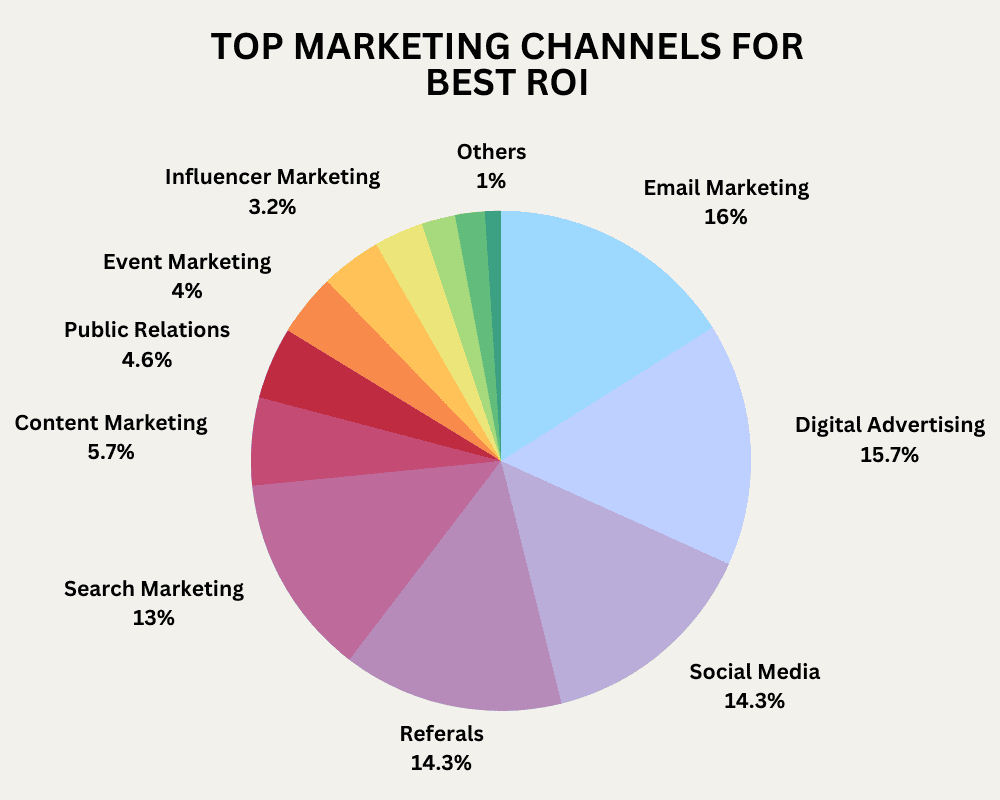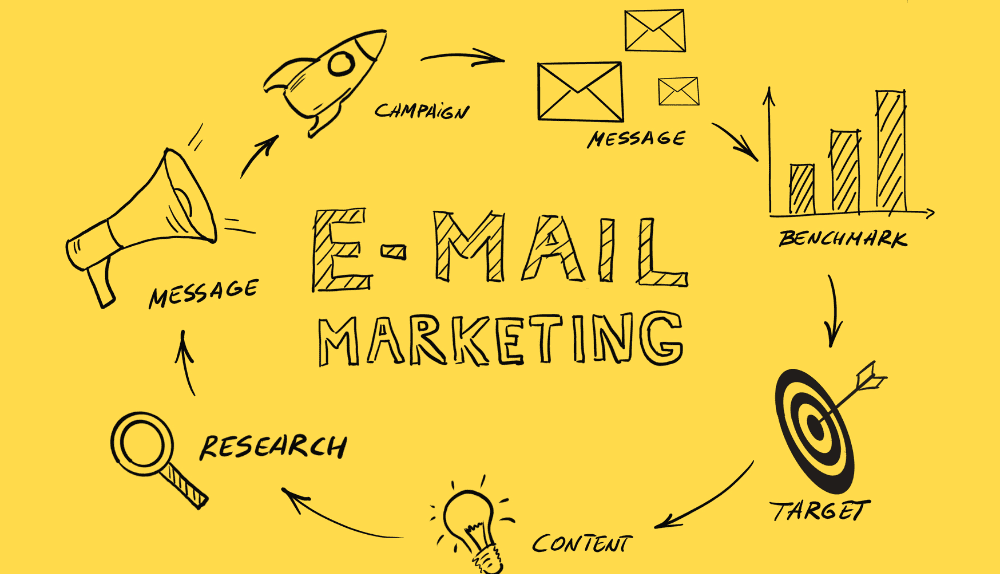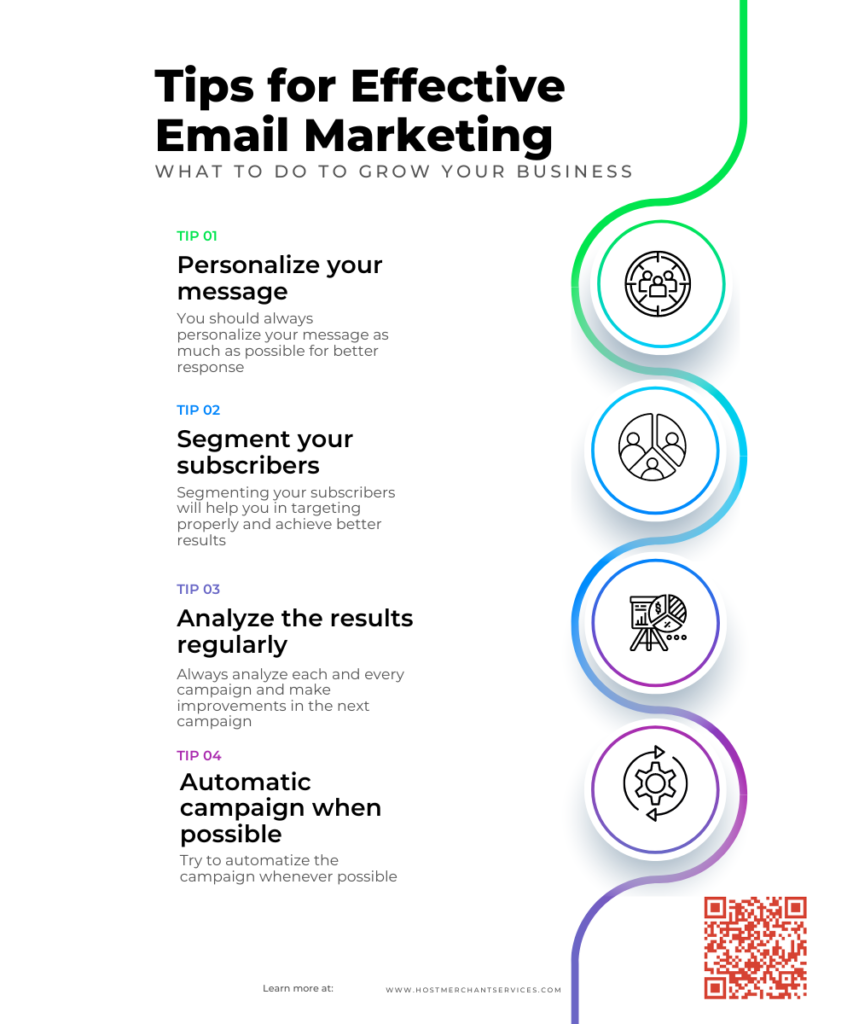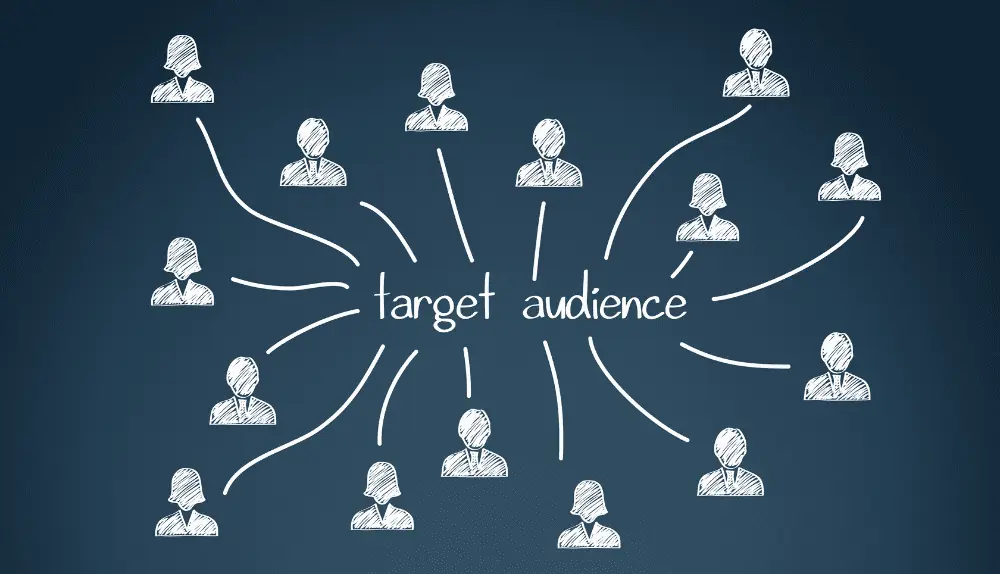In the ever-evolving landscape of digital marketing, there’s one classic tool that continues to stand the test of time and remains at the heart of communication strategies for businesses and individuals alike – email marketing.
Whether you’re a budding entrepreneur looking to launch your first online venture or a seasoned marketer seeking to optimize your outreach efforts, mastering the art of email marketing is an essential skill. In this Beginner’s Guide to Email Marketing, we will unravel the secrets to crafting compelling campaigns, building meaningful connections with your audience, and unlocking the tremendous potential that lies within the confines of your subscribers’ inboxes.
Get ready to embark on a journey that will empower you to harness the true power of email and transform your communication game forever. So, let’s dive in and discover the wonders of email marketing – a realm where innovation, strategy, and creativity converge to drive unprecedented success!
What is Email Marketing? – A Complete Beginner’s Guide To Email Marketing

Sending targeted, tailored, and relevant emails to a group of people or potential clients via email is a highly effective digital marketing approach. Through direct communication with customers, organizations can create lasting relationships and increase customer loyalty. Obtaining email addresses through opt-ins, sign-ups, or lead generation initiatives is the first step in the procedure. Marketers may produce and send a variety of emails, including newsletters, promotional offers, product updates, and invites to events, once they have a contact list in place.
Email marketing enables businesses to deliver tailored content based on customer preferences, behaviors, and demographics, making it a highly effective tool for driving engagement and conversions.
Additionally, with the integration of analytics and tracking tools, marketers can measure the performance of their campaigns, click-through rates, monitor open rates, and other key metrics, enabling continuous improvement and optimization. When executed thoughtfully and ethically, email marketing can yield substantial returns on investment and play a crucial role in the overall marketing strategy of businesses across diverse industries.
How Email Marketing Works?

The first step in email marketing is to build an email list of subscribers who have opted to receive communications from your business. There are several ways to collect email addresses, such as website sign-up forms, lead magnets (free resources or discounts in exchange for an email address), and social media campaigns.
Crafting Engaging Content
Once you have an email list, the next crucial step is to create compelling and relevant content for your email campaigns. This content can include newsletters, promotional offers, product updates, blog articles, and more. It’s essential to tailor the content to suit the interests and preferences of your audience.
Segmentation and Targeting
Not all subscribers on your email list are the same, and they may have different interests or needs. Segmentation involves dividing your email list into smaller groups based on specific criteria, such as demographics, purchase history, or engagement level. This allows you to send targeted emails to each segment, increasing the chances of engagement and conversion.
Designing Eye-catching Emails
The visual appeal of your emails can significantly impact their effectiveness. Creating well-designed, eye-catching emails with clear call-to-action buttons can encourage recipients to take the desired actions, such as clicking on a link or making a purchase.
Automating Email Campaigns
Email marketing tools offer automation capabilities that allow you to set up automated email sequences based on triggers and actions. This could include welcome emails for new subscribers, abandoned cart reminders, or personalized follow-ups based on previous interactions.
Monitoring and Analytics
Monitoring the performance of your email campaigns is vital for assessing their success. Email marketing tools provide analytics that tracks open rates, bounce rates, click-through rates, and other metrics. These insights enable you to measure the effectiveness of your campaigns and make data-driven improvements.
Compliance with Email Regulations
Lastly, it is crucial to adhere to email marketing regulations, such as GDPR (General Data Protection Regulation) and CAN-SPAM Act, to ensure that you are sending emails responsibly and legally.
By following these steps and continually refining your approach based on insights and customer feedback, email marketing can be a highly effective tool for driving engagement, nurturing relationships with your audience, and achieving your marketing goals.
Fundamentals of Email Marketing

In the fast-paced digital world, where marketing messages bombard consumers from all directions, email marketing remains a tried-and-true method for businesses to connect with their audience in a personal and effective way. To excel in this arena, mastering the fundamentals of email marketing is essential. Let’s explore five key principles that can help businesses build strong relationships with their subscribers and achieve successful email campaigns.
Stay Human
Amidst the sea of automated and impersonal communications, staying human in your emails can make a significant impact. Address recipients by their names, and use a conversational tone that resonates with your brand’s personality. Share authentic stories, valuable insights, and meaningful experiences to create a genuine connection with your audience. Building trust through humanized communication can lead to stronger customer loyalty and engagement.
Use Engaging Titles, But Don’t Bait And Switch
Your email subject lines play a critical role in determining whether your email gets opened or sent straight to the trash folder. Craft compelling and engaging titles that pique recipients’ curiosity, but be careful not to use misleading tactics or “clickbait.” Deliver on the promises you make in your subject lines to build credibility and maintain subscribers’ trust.
Keep Messages Short
In a world where attention spans are shrinking, brevity is key to capturing your audience’s interest. Keep your email messages concise and to the point. Use clear and straightforward language to convey your message effectively. If the content requires more explanation, consider using well-designed visuals or provide a link to a landing page for further information.
Include CTAs at the Top and Bottom
A well-placed and clear Call-to-Action (CTA) can significantly impact the success of your email campaign. Including CTAs both at the top and bottom of your email ensures that recipients can act on your message immediately, regardless of where they are in the email. Make the CTA stand out by using contrasting colors and compelling language, driving subscribers to take the desired action.
Ask Permission and Deliver On Your Promises
Respect and trust are the cornerstones of effective email marketing. Always seek explicit permission from your audience before adding them to your email list. Utilize double opt-in processes to confirm subscribers’ intent and reduce the likelihood of spam complaints. Once on your list, deliver on the promises you made during sign-up, providing the content or offers you initially offered. Meeting expectations will keep your subscribers engaged and eager to receive future communications.
By adhering to these fundamentals, businesses can create impactful and successful email marketing campaigns that not only drive engagement but also foster long-lasting relationships with their audience. Email marketing remains a powerful tool when used thoughtfully, and by embracing authenticity, relevance, and respect for subscribers, marketers can unlock the true potential of this timeless communication channel.
Benefits of Email Marketing

Email marketing offers a wide range of benefits for businesses and marketers. When implemented effectively, it can be one of the most powerful and cost-efficient tools in the digital marketing arsenal. Here are some of the key advantages of email marketing:
Wide Reach and High ROI
Email has a broad reach, with billions of active users worldwide. It helps businesses to communicate with their audience on a global scale. Moreover, email marketing consistently delivers a high return on investment (ROI). The relatively low cost per email sent compared to the potential revenue generated makes it a cost-effective marketing strategy.
Direct and Personal Communication
Email marketing enables direct and personalized communication with subscribers. Businesses can segment their email lists based on customer behavior, interests, or demographics, allowing them to send targeted and relevant content. Personalization fosters a stronger connection with recipients and increases the chances of engagement and conversion.
Increased Engagement and Brand Awareness
Engaging and well-crafted email campaigns can captivate recipients and encourage them to take action. Whether it’s clicking on a link, making a purchase, or sharing content with others, email marketing can drive higher engagement rates and boost brand awareness.
Relationship Building and Customer Loyalty
Emails provide a platform for businesses to nurture relationships with their customers. By delivering valuable content, exclusive offers, and personalized recommendations, companies can strengthen customer loyalty and retain their existing customer base.
Targeted Marketing Opportunities
With email marketing, businesses can precisely target specific segments of their audience. This level of targeting ensures that the right message reaches the right people, increasing the effectiveness of the marketing efforts.
Data-Driven Insights and Analysis
Email marketing solutions include thorough reporting and analytics tools that let companies monitor the success of their initiatives. Metrics like open rates, conversion rates, and click-through rates offer insightful information on subscriber behavior, assisting marketers in honing their tactics and enhancing next campaigns.
Automation and Efficiency
Email marketing automation is helpful for businesses to set up pre-scheduled emails, triggered messages, and personalized workflows based on user behavior. Automation streamlines the communication process, saves time, and ensures consistent messaging.
Measurable and Scalable
Unlike traditional marketing methods, email marketing is highly measurable. Marketers can track the success of each campaign and adjust their strategies accordingly. Additionally, email marketing can scale easily as a business grows, making it suitable for both small startups and large enterprises.
Increased Website Traffic and Conversions
Well-crafted emails with compelling calls-to-action can drive traffic to a business’s website or specific landing pages, leading to increased conversions and sales.
Overall, email marketing is a versatile and impactful marketing channel that empowers businesses to reach their audience directly, build lasting relationships, and drive significant business growth with relatively low costs. When executed strategically and ethically, email marketing can be a game-changer for businesses across industries.
How to Find Your Target Audience?

Finding your target audience is a crucial step in any marketing strategy. Understanding who your ideal customers are allows you to tailor your products, services, and marketing messages to better meet their needs. Here are some steps to help you find your target audience:
Conduct Market Research
Start by conducting thorough market research to gain insights into your industry, competitors, and potential customers. Identify your competitors’ target audience and analyze their marketing strategies. Use surveys, focus groups, or online tools to gather data and feedback from potential customers.
Define Your Buyer Personas
Develop thorough buyer personas for your ideal clients. Age, gender, and geography should all be included in these personas, as well as psychographic information on interests, values, and lifestyle, as well as information about behavior patterns like online shopping preferences. You can more accurately identify your target audience if you are aware of these characteristics.
Utilize Analytics and Customer Data
Leverage data from your website, social media, and email marketing tools. Analyze metrics like website traffic, conversion rates, and engagement levels to gain insights into the characteristics of your existing customers. Use this data to refine your understanding of your target audience.
Study Your Customer Support and Feedback
Pay close attention to customer support inquiries, comments, and feedback. They can provide valuable information about your customers’ pain points, needs, and preferences. Addressing these concerns can help you better cater to your target audience.
Engage in Social Listening
Monitor conversations and discussions related to your industry, products, and services on social media platforms. Social listening allows you to understand what people are saying about your brand and your competitors, as well as the needs and desires of your target audience.
Conduct Surveys and Interviews
Reach out to your existing customers and potential leads through surveys and interviews. Ask open-ended questions to gain insights into their challenges, motivations, and preferences. Use their responses to refine your target audience profile.
Test and Refine
As you implement marketing strategies, continuously test and analyze the results. A/B test different messages, visuals, and targeting parameters to see what resonates best with your audience. Use the data to refine your target audience and optimize your marketing efforts.
Be Specific and Realistic
Avoid trying to appeal to everyone. Be specific in identifying your target audience and ensure it is realistically attainable for your business. Narrowing down your focus allows you to create more personalized and impactful marketing campaigns.
Finding your target audience is an ongoing process that requires continuous monitoring and adaptation. By combining market research, data analysis, and customer insights, you can develop a deep understanding of your ideal customers and tailor your marketing efforts to effectively reach and engage with them.
How to Incorporate Email Marketing in Your Business?
Incorporating email marketing into your business can be a highly effective way to connect with your audience, nurture customer relationships, and drive business growth. Here’s a step-by-step guide to help you get started with email marketing:
Define Your Email Marketing Goals
Identify the specific objectives you want to achieve with email marketing. These goals could include increasing website traffic, driving sales, promoting new products, building brand awareness, or engaging with your audience. Clearly defined goals will guide your overall email marketing strategy.
Choose an Email Marketing Service Provider
Select a reputable email marketing service provider that suits your business needs. Some popular options include Mailchimp, Constant Contact, AWeber, and ConvertKit. These platforms offer user-friendly interfaces, customizable templates, automation features, and analytics to track your email campaigns’ performance.
Build and Segment Your Email List
Start building your email list by incorporating sign-up forms on your website, social media platforms, and landing pages. Offer incentives, such as exclusive content or discounts, to encourage visitors to subscribe. Segment your email list according to pertinent factors, such as demographics, past purchases, or level of participation. You’ll be able to do this to distribute targeted and customized material to particular subscriber groups.
Create Compelling Content
Create interesting and useful content that appeals to your target audience and supports your email marketing objectives. Content options include blog articles, product updates, advertisements, and newsletters. Ensure your content is well-designed, mobile-friendly, and has clear calls-to-action (CTAs) to encourage recipients to take the desired actions.
Implement Automation and Triggered Emails
Take advantage of email automation features to save time and improve efficiency. Set up automated email sequences based on triggers such as welcome emails for new subscribers, birthday greetings, or abandoned cart reminders. Automation allows you to nurture leads and maintain consistent communication with your audience.
Test and Optimize Your Campaigns
Utilize the analytics offered by your email marketing platform to constantly check the effectiveness of your email campaigns. Follow data like click-through, open, and conversion rates. To improve the effectiveness of your campaigns, A/B test several aspects of your emails, including the subject line, the images, and the CTAs.
Ensure Compliance and Respect Subscriber Privacy
Adhere to email marketing regulations, such as GDPR and CAN-SPAM Act, to protect your subscribers’ privacy and maintain compliance. Provide a clear option for subscribers to unsubscribe from your emails and promptly honor their preferences.
Monitor and Improve
Regularly review the results of your email marketing efforts and gather feedback from your subscribers. Use this information to refine your email marketing strategy, enhance your content, and adapt your approach to better meet your audience’s needs.
By incorporating email marketing into your business strategy and following these steps, you can leverage the power of email to build meaningful relationships with your audience, drive engagement, and achieve your business objectives.
Final Words
Email marketing remains a versatile and indispensable tool for businesses of all sizes and industries. Its ability to connect with audiences on a personal level, foster strong customer relationships, and drive tangible results makes it a valuable addition to any marketing strategy. By understanding the fundamentals of email marketing, businesses can create engaging and compelling campaigns that resonate with their target audience.
From building a high-quality email list and crafting relevant content to utilizing automation and analytics, email marketing offers endless possibilities for growth and success. Embracing authenticity, respect for subscribers, and data-driven optimizations are the keys to unlocking the true potential of this powerful communication channel. As technology and consumer preferences evolve, email marketing continues to stand the test of time, providing a timeless and effective approach to reach, engage, and delight customers in the digital age.
So, let your business embark on this journey of connection and success, and watch your email marketing efforts flourish as you forge lasting bonds with your valued audience.
Frequently Asked Questions (FAQs)
Why is email marketing important for businesses?
Email marketing is important for businesses because it offers a cost-effective and direct way to engage with customers. It helps businesses to nurture relationships, promote new products, drive website traffic, and ultimately increase sales and revenue.
How do I build an email list?
You can build an email list by adding sign-up forms to your website or blog, offering incentives such as discounts or free resources for subscribing, running social media campaigns, and using lead generation tools like content upgrades or webinars.
How can I segment my email list?
Segmenting your email list involves dividing your subscribers into smaller groups based on specific criteria such as demographics, behavior, or interests. Most email marketing platforms offer segmentation features that allow you to categorize your audience and send targeted emails to each segment.
What is a good open rate for email campaigns?
The average open rate for email campaigns varies across industries but generally falls between 15% to 25%. However, the benchmark for a good open rate depends on your specific industry, audience, and the quality of your email list.
What are the best practices for email marketing?
Some best practices for email marketing include sending personalized and relevant content, using clear and concise language, optimizing emails for mobile devices, using eye-catching visuals, including clear and compelling CTAs, and respecting subscribers' preferences and privacy.

